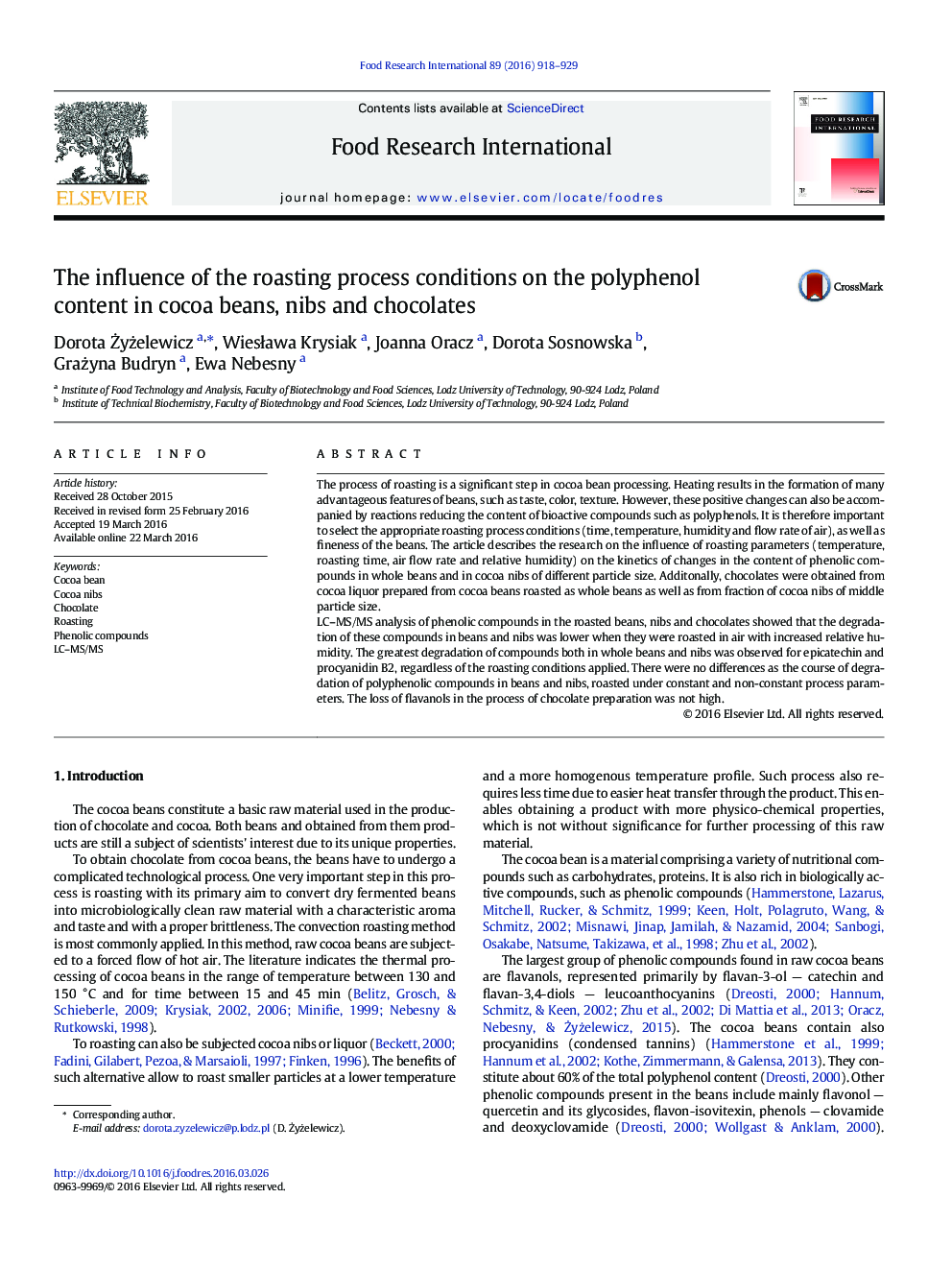| Article ID | Journal | Published Year | Pages | File Type |
|---|---|---|---|---|
| 5768328 | Food Research International | 2016 | 12 Pages |
â¢Air flow rate 0.5 m/s, RH = 0.3% resulted in lower reduction of flavanols in beans.â¢A larger flavanol reduction was observed in the smallest fraction of nibs.â¢The loss of flavanols in the process of chocolate preparation was not high.
The process of roasting is a significant step in cocoa bean processing. Heating results in the formation of many advantageous features of beans, such as taste, color, texture. However, these positive changes can also be accompanied by reactions reducing the content of bioactive compounds such as polyphenols. It is therefore important to select the appropriate roasting process conditions (time, temperature, humidity and flow rate of air), as well as fineness of the beans. The article describes the research on the influence of roasting parameters (temperature, roasting time, air flow rate and relative humidity) on the kinetics of changes in the content of phenolic compounds in whole beans and in cocoa nibs of different particle size. Additonally, chocolates were obtained from cocoa liquor prepared from cocoa beans roasted as whole beans as well as from fraction of cocoa nibs of middle particle size.LC-MS/MS analysis of phenolic compounds in the roasted beans, nibs and chocolates showed that the degradation of these compounds in beans and nibs was lower when they were roasted in air with increased relative humidity. The greatest degradation of compounds both in whole beans and nibs was observed for epicatechin and procyanidin B2, regardless of the roasting conditions applied. There were no differences as the course of degradation of polyphenolic compounds in beans and nibs, roasted under constant and non-constant process parameters. The loss of flavanols in the process of chocolate preparation was not high.
